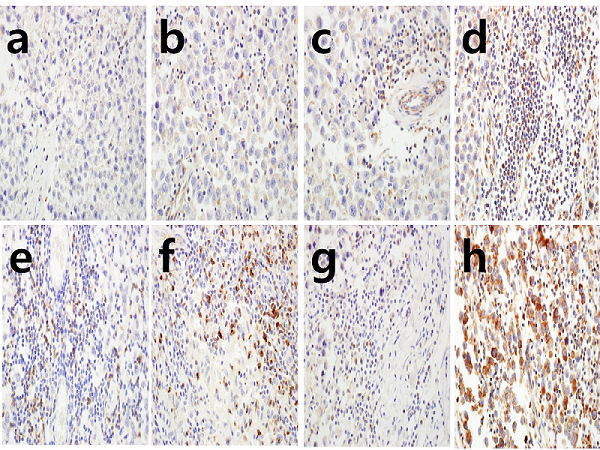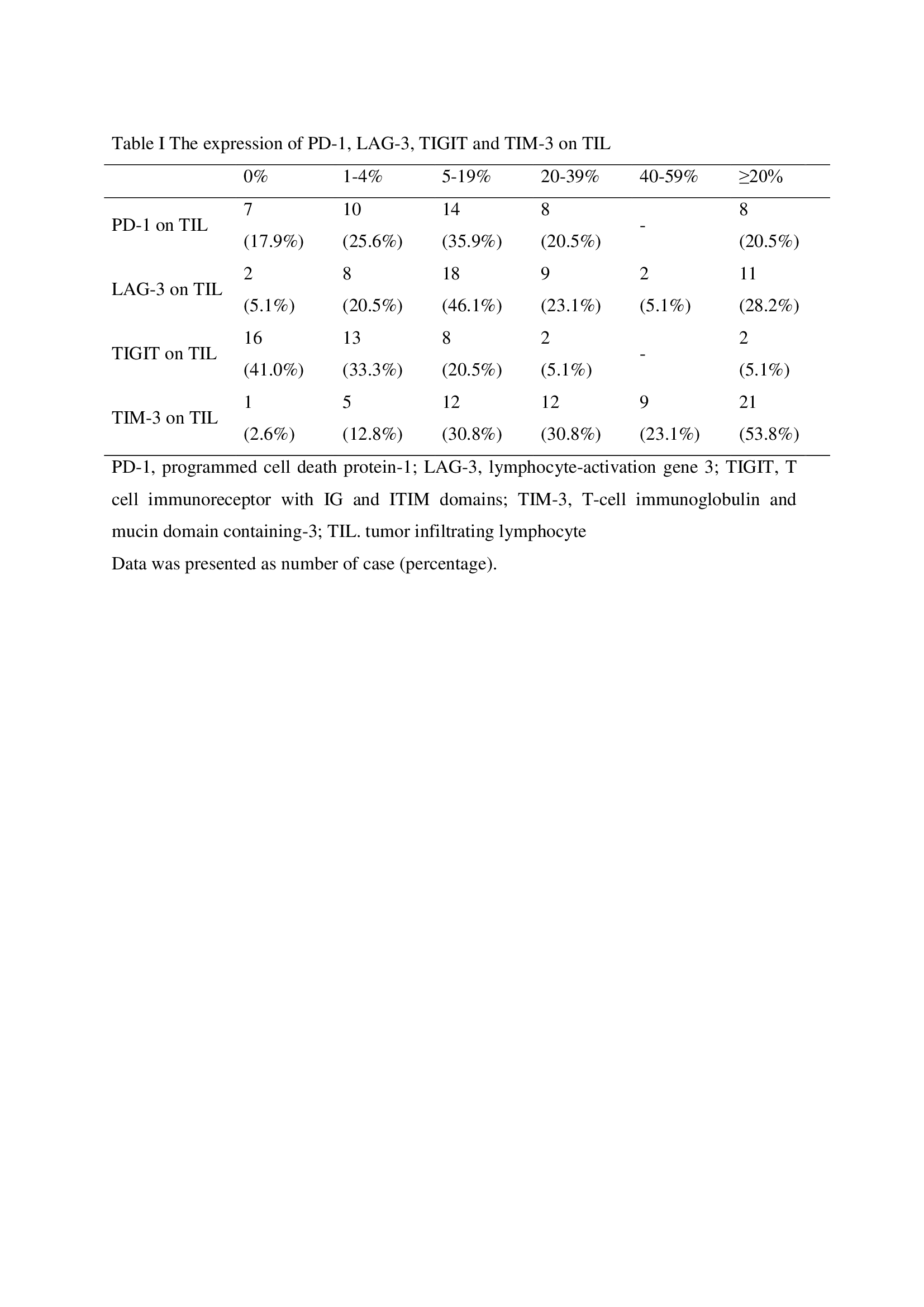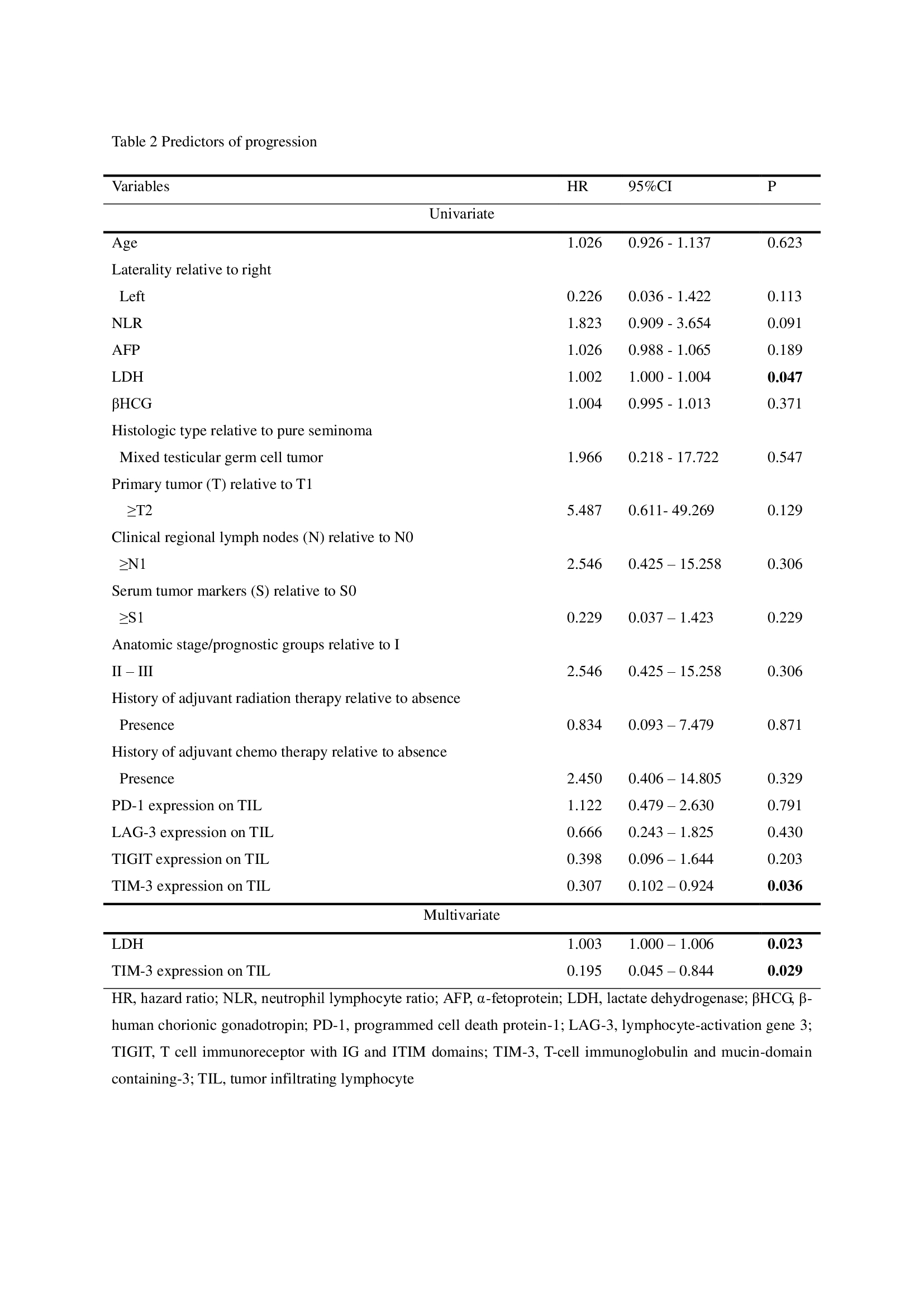Back
Poster, Podium & Video Sessions
Moderated Poster
MP46: Penile & Testicular Cancer I
MP46-07: The prognostic significance of TIM-3 expressing tumor-infiltrating lymphocytes in testicular germ cell tumors
Sunday, May 15, 2022
1:00 PM – 2:15 PM
Location: Room 222
Ki Hong Kim*, Hee Jo Yang, Si Hyun Kim, Doo Sang Kim, Chang Ho Lee, Cheonan, Korea, Republic of, Soon Auck Hong, Byung Hoon Chi, Seoul, Korea, Republic of, Ji-Hye Lee, Youn Soo Jeon, Cheonan, Korea, Republic of
- KK
Poster Presenter(s)
Introduction: PD-1 and PDL-1 inhibitors have not demonstrated any effect in the treatment of testicular germ cell tumors (TGCTs). Therefore, the identification of the expression and prognostic roles of other immune co-inhibitory receptors is required. This study aimed to evaluate the prognostic significance of LAG-3, TIGIT, and TIM-3 expressing tumor-infiltrating lymphocyte (TIL) in TGCT.
Methods: Surgical specimens from thirty-nine patients diagnosed with TGCT after radical orchiectomy in two tertiary-care academic facilities were included in this study. The expressions of PD-1, LAG-3, TIGIT, and TIM-3 were detected by immunohistochemistry using anti-PD-1, anti-LAG-3, anti-TIGIT, and anti-TIM-3 antibodies. Cox regression tests were used to identify the predictive factors for the progression of TGCT.
Results: During the follow-up period, there were relapses in five patients (12.8%). On univariate and multivariate Cox regression analyses, TIM-3 expression on TIL (hazard ratio [HR] = 0.195, p=0.029) and serum lactate dehydrogenase level (HR = 1.003, p=0.023) were identified as independent predictors for relapse-free survival of patients with TGCT. The TIM-3 high expression group of =20% was identified as a better prognostic group than the TIM-3 low expression group (p = 0.0007).
Conclusions: The significance of TIM-3 among immune co-inhibitory receptors that could be expressed in the tumor microenvironment of TGCT was demonstrated for the first time. We showed that there is a need to pay attention to TIM-3 expression for the treatment of TGCT.
Source of Funding: none



Methods: Surgical specimens from thirty-nine patients diagnosed with TGCT after radical orchiectomy in two tertiary-care academic facilities were included in this study. The expressions of PD-1, LAG-3, TIGIT, and TIM-3 were detected by immunohistochemistry using anti-PD-1, anti-LAG-3, anti-TIGIT, and anti-TIM-3 antibodies. Cox regression tests were used to identify the predictive factors for the progression of TGCT.
Results: During the follow-up period, there were relapses in five patients (12.8%). On univariate and multivariate Cox regression analyses, TIM-3 expression on TIL (hazard ratio [HR] = 0.195, p=0.029) and serum lactate dehydrogenase level (HR = 1.003, p=0.023) were identified as independent predictors for relapse-free survival of patients with TGCT. The TIM-3 high expression group of =20% was identified as a better prognostic group than the TIM-3 low expression group (p = 0.0007).
Conclusions: The significance of TIM-3 among immune co-inhibitory receptors that could be expressed in the tumor microenvironment of TGCT was demonstrated for the first time. We showed that there is a need to pay attention to TIM-3 expression for the treatment of TGCT.
Source of Funding: none




.jpg)
.jpg)